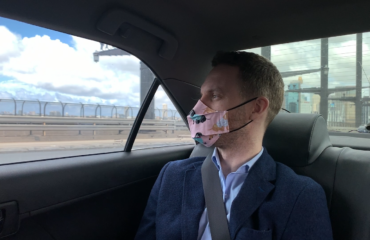
Richard Keane speaking with a panel of experts at the Burnet Institute’s World Hepatitis Day forum. Photo: Tracy Parish.
When Heidi Drummer was a young doctor, she was told by her superiors to keep a “close eye” on “junkies” entering the emergency room. She was warned to be hyper-vigilant, stay “on her game”, and treat drug-affected patients with suspicion as they were likely to “trick” her into prescribing opioids.
“I know those conversations continue today,” says Dr Drummer, now the program director of disease elimination at Melbourne’s Burnet Institute, where health professionals and community workers gathered on Monday for World Hepatitis Day. All agreed that a stigmatised attitude within the medical community persists.
“The most common discrimination is unintentional,” says Sione Crawford, CEO of Harm Reduction Victoria.
These enduring attitudes are being blamed for a persistent reluctance by many people suffering from the effects of hepatitis C to seek out new treatments that have already cured 50,000 Australians since they were made available in 2016.
Crawford cites a trip to the dentist as a typical example of medical discrimination. It requires filling in a medical form that often includes a tick box for drug use or hepatitis C, says Crawford – who also lives with the virus.
This shouldn’t be a standard requirement for such treatment, he argues. “There are only very few circumstances where you have to disclose you have Hep C,” says Crawford. “Going into medical treatment certainly isn’t one of them.
“All doctors are supposed to use universal precautions which means they treat everyone as though they have a blood-borne virus or disease, just in case. Asking someone if they have Hep C or judging someone by how they look is not effective.”
Once that box has been ticked, Crawford says doctors are quick to react “with either silence or suspicion”.
Hepatitis C is a virus that attacks the liver. It spreads through any type of blood-to-blood contact. With the majority of hepatitis C patients having contracted the disease through needle use, Crawford says there is “fixed, firm and moral” relationship that continues to underpin mainstream understanding of injecting drug users, and hence the virus.
He asked the health professionals in the room examine their prejudices.
“Shut your eyes and think about drug use. Is it a dirty fellow on the street? Is it me? Is it someone else in this room? Because we’re all of those things.”
In March of 2016, general practitioners gained authority to prescribe revolutionary new treatments that were previously only available through specialists. These medicines are known as direct-acting antiviral therapy (DAA). The new treatments have a success rate of over 95%, which if left untreated can cause scarring in the liver, liver failure and ultimately death.
Although many people living with hepatitis C are reluctant to seek treatment. Dr Alisa Pedrana said there needs to be an “accountability framework” to measure and track stigma within the medical community, to regain trust and encourage people living with hepatitis C to receive treatment.
“We need to be thinking about what are the interventions for addressing this kind of stigma and discrimination,” she said.
Despite treatment now being freely available throughout Australia, there are still an estimated 180,000 people suffering from the disease. Those living with the disease have been recognised as the “most marginalised and difficult to reach”, with treatment rates lowest in low socioeconomic and regional areas.
Dr Nick Scott describes himself as an is an “econometrician”, using “models to predict the future.”
His latest research, shared with the Burnet Institute this week, found that reducing hepatitis C by targeting people who inject drugs should be a priority for Australia to achieve the eradication target.
Richard Keane, CEO of Positive Living, stressed the need for medical professionals to show compassion. “Behind all of this data are human beings,” he told the room.
Having blood samples taken is another traumatising experience common to people with hepatitis C if they have a history of injecting drug use.
“Most pathologists will find a vein eventually, but the trouble is that getting there can be embarrassing, shaming, and really painful as well,” says Crawford. “I don’t think that’s well understood [within the medical community].”
Keane stressed the need for doctors to improve their approach, and positioned re-infection as something that is “rarely” talked about within the medical community.
“I’m not talking about needles. It can be simple things like sharing douching equipment, sharing sex toys. Are we willing to have those conversations?”
Having recently been cured of Hep C himself, Keane says that “not once” was he provided information about reinfection.
“These are not easy conversations for people in a medical setting to have.
“To get the results we’re looking for [eradication], we need to find ways to clear that blockage between the patient and the person that we’re engaging with,” says Keane.
“That’s really challenging, but I think it can be done.”



